“Se me frulla un pensiero che me scoccia
me fermo a beve e chiedo aiuto ar vino:
poi me la canto e seguito er cammino
cor destino in saccoccia”
(Trilussa)
“If I find myself thinking one sad thought,
I stop for a moment and call the wine for help.
I tell myself that everything’s ok and, once I find my way
I keep walking with my destiny in my pocket”.
(Trilussa)
In uno dei miei ultimi articoli ho scritto che amo l’Autunno da quando vivo in questa parte del mondo. Ho mentito. Amo l’autunno, questo è vero, ma non solo qui in New Jersey. Anche a Roma è un periodo dell’anno eccezionale, caro non solo a me ma a tutti i romani. Il momento migliore per godersi appieno la capitale è infatti durante la stagione autunnale, quando l’aria è friccicarella ma non ancora fredda, quando c’è abbondanza di fichi, mele, pere, cachi e uva (soprattutto di uva!). Non c’è momento più ideale per una scampagnata, una serata all’aperto da passare in allegria con gli amici, tra un bicchiere di vino, del cibo genuino e tante risate. Ottobre è un mese storicamente famoso per questo. Si sente spesso parlare di “Ottobrate Romane”. Ma esattamente di cosa si tratta? Non immaginate neppure minimamente quanto mi piacerebbe essere nella mia città per farvelo vedere. Non sarebbe grandioso? Eppure, dal momento che non so quando e se mai mi capiterà di nuovo, ho pensato che non potevate davvero perdere un’atmosfera tanto particolare e così ho deciso di chiamare in aiuto un inviato speciale, un viandante romano, che non solo ci spiegherà cosa sono queste benedette “Ottobrate Romane”, ma ci porterà anche nel vivo di una festa tipica e storica di uno dei più popolari dei Castelli Romani, Marino.
Lui è Massimo Secondi e non è soltanto “viandante per un giorno” nell’attesa che il viandante che sto cercando da tempo (leggete qui) venga finalmente alla luce, ma è anche il mio aiutante segreto, una specie di “folletto”, che mi risolve tanto lavoro giornaliero e non solo. Oltre ad avermi messo in contatto con il romano in Giappone Daniele Beno (trovate la sua intervista qui), si occupa della pagina Facebook con impeccabile cura. Seguiteci se ancora non lo fate e ve ne accorgerete!
Adesso però vi lascio al suo racconto e se vi capita di passare per Roma in questo periodo, mi raccomando godetevi la sua bellezza e i suoi sapori.. e pensatemi se vi va.
Ciao,
Alessandra
In one of my latest articles I expressed my love for the fall season, since I moved to this side of the world. I was lying. I mean, I do love fall, but I loved it way before I moved here to New Jersey. Rome in the Autumn is pretty amazing as well, and I’m sure all of my fellow compatriots will easily agree with me when I say that this time of the year is perfect to enjoy Italy’s capital to its fullest: the air is friccicarella ( crispy ) and pleasant and there’s an abundance of seasonal fruit such as figs, apples, pears, Sharon fruit and grapes ( especially grapes, if you know what I mean *wink* ) everywhere. A delicious explosion of flavors in your mouth. There isn’t a better time to enjoy outdoor activities, picnics or just chilling with friends sharing good wine, tasty genuine food and great laughs. October is utterly famous in Rome for all that and we often hear about the “Ottobrate Romane”. But what exactly are they? You can’t even begin to imagine how much I would love to be in my city right now tell you / show you everything there is to know about them. Wouldn’t that be grand? Instead I’m in America, and since I don’t have any immediate plans to go back to Rome anytime soon and I wanted you all to breathe in a magical atmosphere everyone should experience at least once in a lifetime, I decided to hire a special correspondent, a Roman wayfarer who will not only tell us what the Ottobrate Romane really are, but he’ll bring us along with him to one wonderful historic event that takes place in one of the most popular Roman Castles, Marino. Massimo Secondi is not only my wayfarer for a day ( I’m still hoping to find the permanent wayfarer I have been searching for – please read here – ), he’s also my secret little helper. Some sort of elf, if you will, who helps me get a lot of daily work done. He helped me get in touch with a Roman living in Japan, Daniele Beno, ( please check out his interview – here – ) and he also runs our Facebook page doing a great job at it. Follow us, if you don’t already, to see what I mean. Anyway, I’m going to let Massimo take over from here. If you happen to be in Rome during this time have fun, enjoy its beauty and its flavors and, if you want, think about me. I would really like that!
Ma chi è fortunato a visitarla in Ottobre ha una visione di Roma meravigliosa. Forse saranno i colori o gli odori di questo mese, che sono unici al mondo.. e se non mi credete provate a vedere un tramonto romano: io adoro i tramonti, dal Pincio, dal Gianicolo o da Ponte Sisto.
Questo periodo, grazie anche al clima mite, viene definito “Ottobrata Romana”. Ma le Ottobrate Romane erano in origine le scampagnate o gite che venivano fatte fuori porta, di Domenica o Giovedì, durante il periodo della vendemmia.
Le mete più gettonate erano Monte Testaccio, Ponte Milvio, Monteverde e fuori Porta San Giovanni, dove all’epoca c’erano le vigne e le osterie. Erano delle vere e proprie feste, bisognava portarsi da mangiare mentre il vino lo si trovava in loco, e poi si giocava, si cantava e si ballava. Nelle mie ricerche ho trovato un ritornello del ballo detto il saltarello:
“birimbello birimbello
quant’è bono ‘sto sartarello
smòvete a destra smòvete a manca
smòvete tutto cor piede e coll’anca”.


In fondo noi romani siamo ancora così, basta che giochiamo, cantiamo, balliamo e beviamo!
Oggi le gite fuori porta le facciamo ai Castelli romani dove, insieme alle moderne osterie, si possono trovare le “Fraschette”.
Il nome “ Fraschetta” pare sia dovuto al fatto che i viticoltori del tempo mettevano una frasca come insegna in modo tale da indicare agli avventori che il nuovo vino era pronto da bere. In origine nelle fraschette non c’era la cucina, si vendevano solo pane e vino locale “sciolto” e il mangiare bisognava portarselo da casa.
Oggi ci si possono trovare salumi, formaggi e soprattutto la porchetta, ma lo spirito è sempre quello! Una strofa de La Società dei magnaccioni di Lando Fiorini rappresenta proprio lo spirito delle Ottobre romane:
“a noi ce piace
de magna e beve
e nun ce piace de lavorà’”
E allora con questo spirito festaiolo saliamo in auto e andiamo a Marino dove si sta svolgendo la sagra dell’uva.. mi viene in mente un’altra canzoncina che tutti noi romani abbiamo cantato:
“Lo vedi, ecco Marino
la sagra c’è dell’uva
fontane che danno vino
quant’abbondanza c’è..”
Sia chiaro a tutti, all’andata guido io, ma dobbiamo trovare un astemio per il ritorno!!
Prima di assaggiare il vino, andiamo a vedere le origini della festa che è sia religiosa che profana. Quelle relative alla festa religiosa sono dovute al fatto che papa Pio V proclamò la Madonna del Rosario protettrice dello Stato Pontificio ed ordinò che in tutte le località sottoposte al suo dominio temporale si festeggiasse il 7 ottobre di ogni anno, nel ricordo della vittoria della battaglia di Lepanto del 1571. Il contingente pontificio guidato da Marcantonio Colonna, signore di diversi feudi tra cui Marino, era stato posto sotto la protezione proprio della Madonna del Rosario.
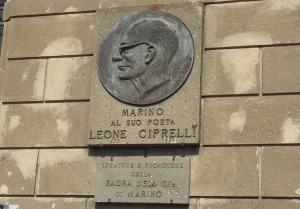 Le origini della festa profana nascono invece dall’idea di creare una festività per sponsorizzare il vino dei vigneti marinesi. Nel 1904 fu organizzato un grande evento, le Feste Castromenie, per attirare l’attenzione sul vino di Marino, ma la prima sagra vera e propria si è svolta nel 1925 voluta dal poeta romanesco – originario di Marino – Leone Ciprelli.
Le origini della festa profana nascono invece dall’idea di creare una festività per sponsorizzare il vino dei vigneti marinesi. Nel 1904 fu organizzato un grande evento, le Feste Castromenie, per attirare l’attenzione sul vino di Marino, ma la prima sagra vera e propria si è svolta nel 1925 voluta dal poeta romanesco – originario di Marino – Leone Ciprelli.
Da allora la festa si è sempre svolta il primo fine settimana di Ottobre.
Questo è un articolo de Il Messaggero: « Si può ben dire che tutta Roma s’interessi alla originale ed eccezionale festività, ideata, con alto senso di poesia da Leone Ciprelli, la quale si celebrerà domani a Marino. […] Quella di domani sarà per Marino una data davvero memorabile. » (Il Messaggero, sabato 3 ottobre 1925).
La sagra si svolge in due giorni, la Domenica ed il Lunedì; il secondo giorno viene anche detto “Sagretta” ed è una versione più intima, più familiare, in quanto ci sono meno turisti e più marinesi.
Anche se è un giorno lavorativo scelgo proprio il Lunedi per andarci, e siccome la mia compagna deve lavorare, chiamo un mio amico, Daniele, per farmi accompagnare.
Dopo aver pranzato in un trattoria cominciamo a girare per la zona pedonale dove a breve ricomincerà il tutto, ci sono pochissime persone, alcune dormono sulle panchine, alcune sono davanti ai bar a chiacchierare, altre semplicemente passeggiano come noi.
Ci ritroviamo tra gli stand di porchetta, di libri e di cianfrusaglie, ma è tutto molto lento, sembra essere in una sorta di limbo, ma è un limbo piacevole, gli altoparlanti, sparsi un po’ ovunque, trasmettono in continuazione canzoni romane che vengono interrotte ogni tanto dalla voce di una signorina che ci ricorda il programma della giornata.
Andiamo a vedere la mostra di Vittoria Colonna e la sua dinastia, poi vediamo un filmato sulla storia di Marino e della sagra dell’uva. Quando usciamo parliamo con uno degli organizzatori della sagra, ci dice che abbiamo fatto bene ad andare il Lunedì perché la Domenica ci sono troppi ubriachi e si perde il motivo vero della festa.
Ricominciamo a girovagare e di colpo sembra che Marino si sia svegliata, la signorina dell’altoparlante ci annuncia che a breve inizierà il corteo storico de “Il ritorno di Marcantonio Colonna dalla battaglia di Lepanto del 1571”, ma prima di prendere posizione dietro le transenne andiamo a fotografare la fontana dei Quattro Mori, la fontana principale del cosiddetto “miracolo delle fontane che danno vino”.
Siamo in perfetta sintonia con il ritmo del paese, infatti con estrema calma ci prepariamo a vedere sfilare il corteo.
Per primi ci sono i suonatori di tamburo, poi gli sbandieratori, poi tutte le famiglie importanti dell’epoca e per ultimo Marcantonio Colonna in sella al suo cavallo bianco. Alcuni figuranti sono proprio nella parte, altri sono più rilassati, soprattutto i più piccoli.
Finita la sfilata è ora del miracolo, quindi ci mettiamo in fila intorno alla fontana e alle 18,00 precise, come da programma, dalla Fontana dei Quattro Mori sgorga il vino.
In poco tempo arriviamo ad avere la nostra parte del miracolo, un bicchiere a testa, e brindiamo alla sagra di Marino e alla giornata rilassata e spensierata. Voglio concludere con un altro verso della Società dei magnaccioni:
“e’ mejo er vino
de li Castelli
de questa zozza società”
Un saluto a tutti e grazie di avermi seguito in questa gita fuori porta.
Massimo
To us, Romans, Rome is always beautiful. That’s a fact. But if you are lucky to visit during the month of October, you will be able to witness an extraordinary reality you never thought existed. I don’t know if it is the colors and the scents that October effortlessly brings out, but there’s nothing like it and if you don’t want to take my word for it, I dare you to watch a Roman Sunset and see for yourself. My favorite spots for the most stunning sunsets are: the Pincian Hill ( Pincio ), the Janiculum Hill ( Gianicolo ) and the Sisto Bridge ( Ponte Sisto ). This time a year, very enjoyable courtesy of the mild temperatures, is called Ottobrata Romana. Originally, the Ottobrate Romane, were outings that took place mainly on Sundays and often on Thursday, during harvest time. The most sought after destinations for excursions were Mount Testaccio ( Monte Testaccio ), the Milvian Bridge ( Ponte Milvio ) and the vineyards between Monteverde and Porta San Giovanni. That was the life. Everyone was required to bring their own food from home while the wine was available on site, free of charge. People played, sang and danced the night away to the notes of the famous Saltarello that goes:
“birimbello birimbello quant’è bono ‘sto sartarello smòvete a destra smòvete a manca smòvete tutto cor piede e coll’anca”.
Trying to translate this would be ludicrous and pointless, because it would lose its charm and authenticity. Let’s just say that what it means is, a couple of glasses of wine make dancing a lot easier. And that’s what being Roman is all about: playing, singing, dancing and drinking is all we need to be happy. Nowdays, we attend our celebrations at the Roman Castles. There we can find modern “osterie” ( taverns) as well as ancient ones called “le Fraschette” A fraschetta is a little frasca which literally means “tree branch”. In older times all winemakers used to hang a tree branch out on their tavern doors to inform their customers that the new wine was ready for tasting. The original Fraschette didn’t come with a kitchen. Bread and wine, sold by the glass, were the only available options and, as I mentioned above, people had to bring their own food from home. The updated version of the Fraschette offer plenty of cold cuts, different cheeses and the famous ” porchetta ” ( pork roast ) but the atmosphere is still as magical as it used to be. A verse of one classic Roman song called “La Societa’ dei Magnaccioni” ( the society of the pimps, told you there’s no point in trying to translate these lyrics ) by Lando Fiorini perfectly represents the spirit that brings all of the Romans together during the Ottobrate Romane. It goes like this: “a noi ce piace de magna’ e beve e nun ce piace de lavorà’” Literally: we like to eat and drink and we don’t like to work. Wrapped up by this festive mood let’s get in the car and head to the Grape Festival in Marino. Another song that all Romans sang at some point or another in their lives comes to mind: “Lo vedi, ecco Marino la sagra c’è dell’uva fontane che danno vino quant’abbondanza c’è..” It means: Do you see Marino? There’s a grape festival there, fountains pour wine and there’s abundance everywhere. Let’s get one thing straight here. I can drive on the way there, but we need to find someone sober who can drive us back. Deal? Before I start my wine tasting fun, I want to talk about how and where the Grape Festival in Marino originated, because it has both a religious and profane meaning to it. Religious because the Pontiff, St. Pope Pio V, believed that the victory of the Christian Holy League, guided by Marcantonio Colonna, over the Ottoman Turks during the Battle of Lepanto – the biggest naval contest in human history -, has been made possible only through the power of one special weapon: the Rosary. The great battle occurred on October 7th 1571 and on that day the Pontiff instituted the feast of the Holy Rosary to honor the Blessed Virgin Mary. Profane because the Romans took the opportunity to use the historic anniversary to grow the Marino’s wine fame. In 1904 a huge event was put together in order to draw attention to the wine of Marino, although the first real Wine Festival was established in 1925 by local poet, Leone Ciprelli. Ever since then, the Wine Festival is annually held the first weekend in October. This is the article that “Il Messaggero”, the main Roman newspaper, published back then: “Tomorrow Romans will come together as a whole to celebrate the exceptional festivities hosted by Leone Ciprelli and his high sense of poetry in Marino. Tomorrow history will be made”. Il Messaggero, October 3rd, 1925 The festival starts the first Sunday of October and the following Monday. On Monday, they call it “Sagretta” ( little festival ) and it’s a more intimate, family oriented event as most tourists are gone. It’s a business day and my significant other has to work, so I ask my good friend Daniele to join me for the day. After a tasty lunch at a “trattoria” we head toward the place where everything is going to start over where it left off the day before. There are just a few people out. Some use benches to take a nap, some gathered outside a bar to chitchat and some just wander down the street like us. We walk through stands of porchetta, books and random junk. Everything around us moves in slow motion, we feel like we’re in a sort of limbo, but it’s a good feeling. Speakers playing old Roman songs uninterruptedly are all over the place. Every once in a while a nice lady’s voice reminds us all about the events and the plans for the day. We check out the exposition of Vittoria Colonna and we watch a small, interesting documentary about the story of Marino and its the grape festival. On our way out we meet with one of the volunteers of the Festival who tells us that we did the right thing by coming on Monday as Sunday is full of drunks and the real festivity spirit is just not the same We keep walking when all of a sudden we both realize that Marino is finally waking up. The nice lady from the speaker informs us that the re-enactment of the return of Marcantonio Colonna from the Battle of Lepanto in 1571, will begin soon. But, before we take a seat and enjoy the show, we decide to take a few pictures at the main Fountain in Marino ( Fontana dei Quattro Mori ) where the miracle of white wine pouring out of it occurs. We feel totally connected with our surroundings and we calmly walk back to watch the parade that’s about to start. Local marching bands open it up followed by talented flag flyers who put on an amazing show. Highborn families beautifully dressed in period costumes and last but certainly not least Marcantonio Colonna makes his triumphal entry on his white horse. Everyone participated in the parade with enthusiasm. Some were really into in, some not so much. But it was overall a great one. Once the parade was over it was time for a miracle: we patiently get in line because at 18:00 on the dot the Fountain of the four Moors will start gushing white wine instead of water. Shortly after we get a little taste of the miracle as well. We get each a free glass of white wine and we make a toast to the Marino Grape Festival and the beautiful day we spent there. And there you have it, folks. I wish to end this article with another verse of “La Società dei Magnaccioni“, if you don’t mind. “e’ mejo er vino de li Castelli de questa zozza società” The wine is better than the Roman Castles in this filthy society. Thanks everyone for joining me on my away trip to the Wine Festival.*hiccup*
Massimo
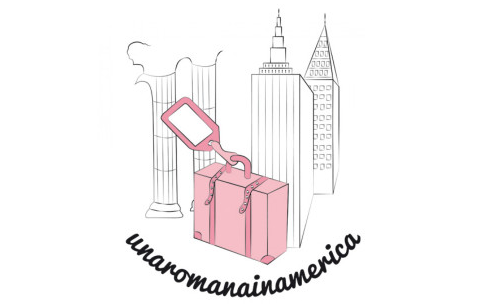

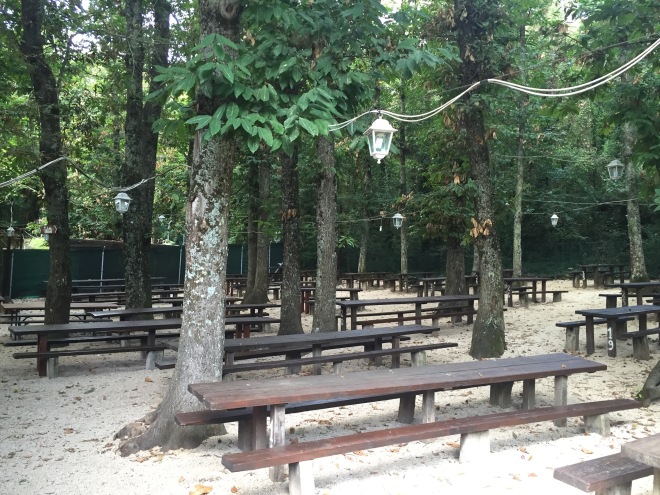
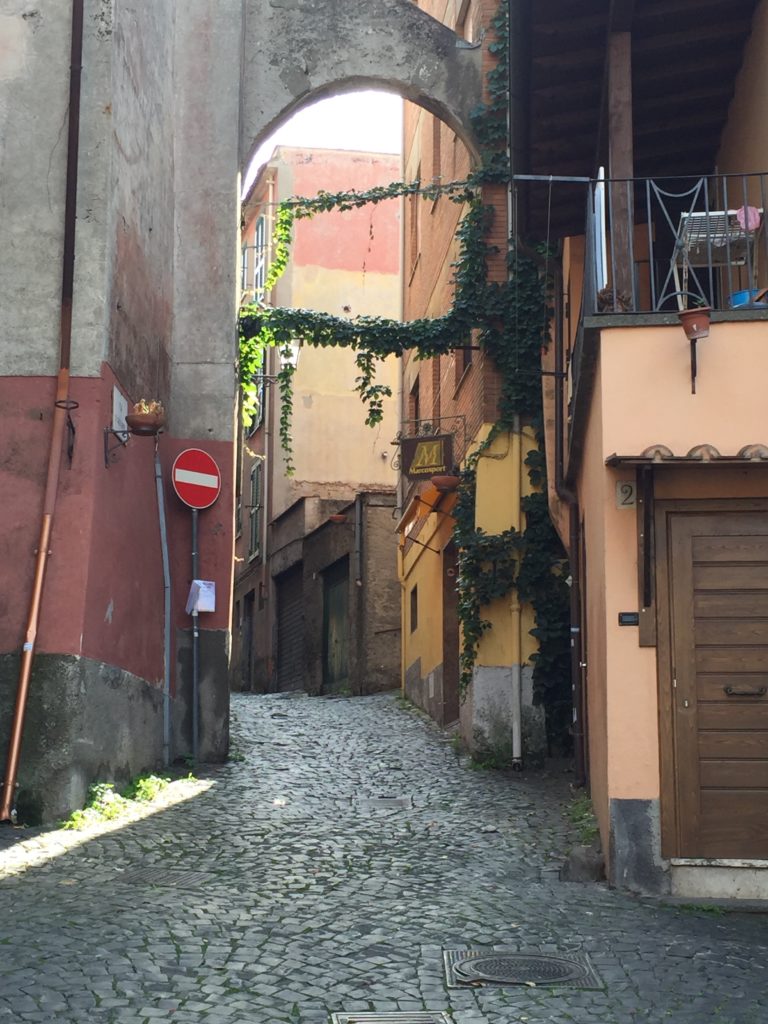
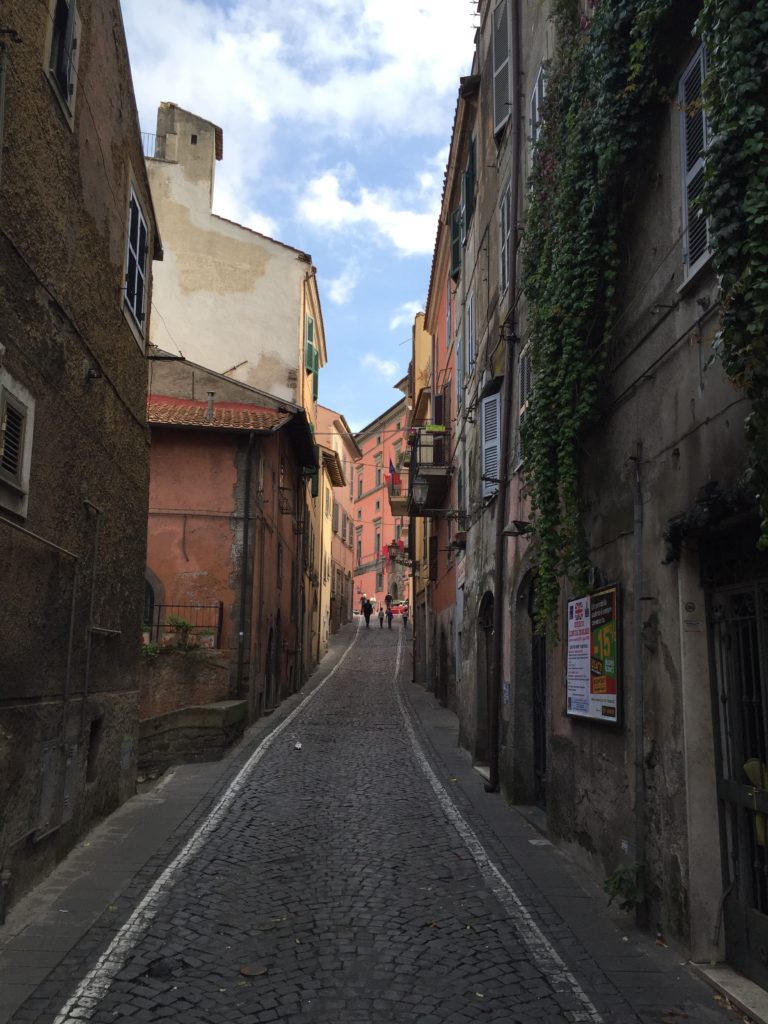
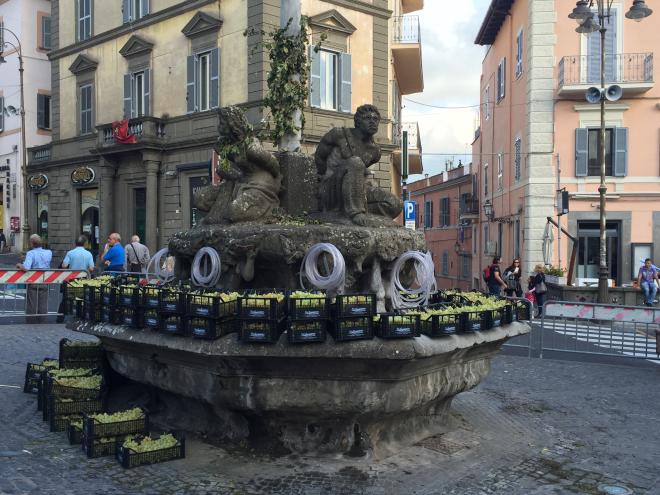
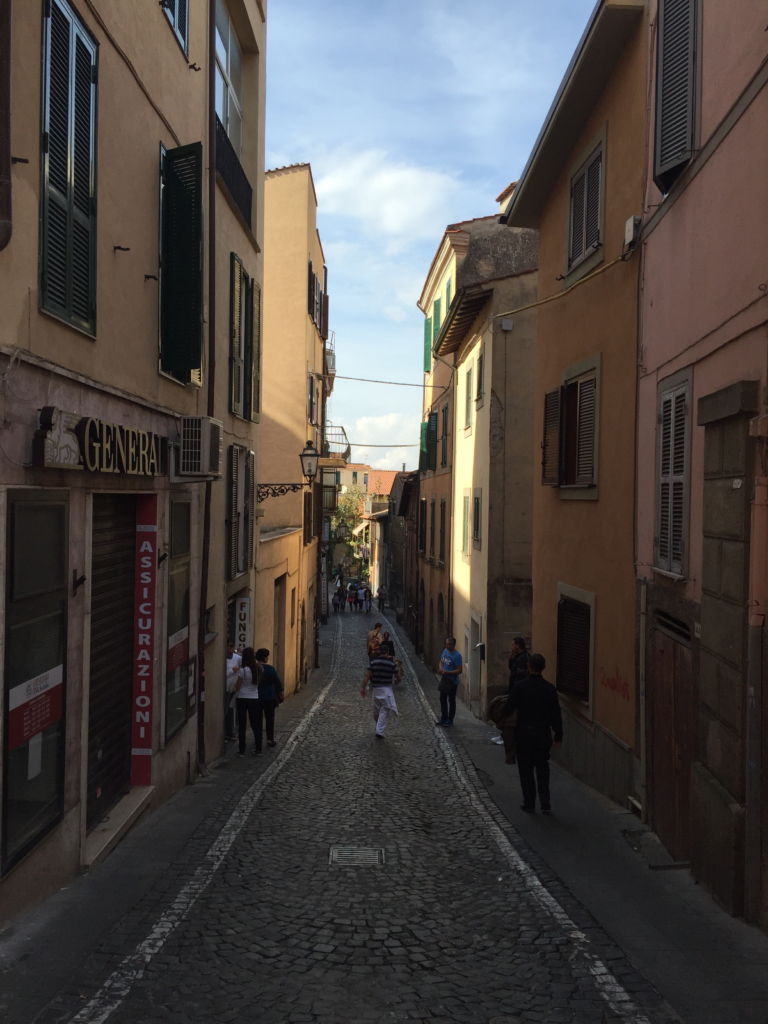
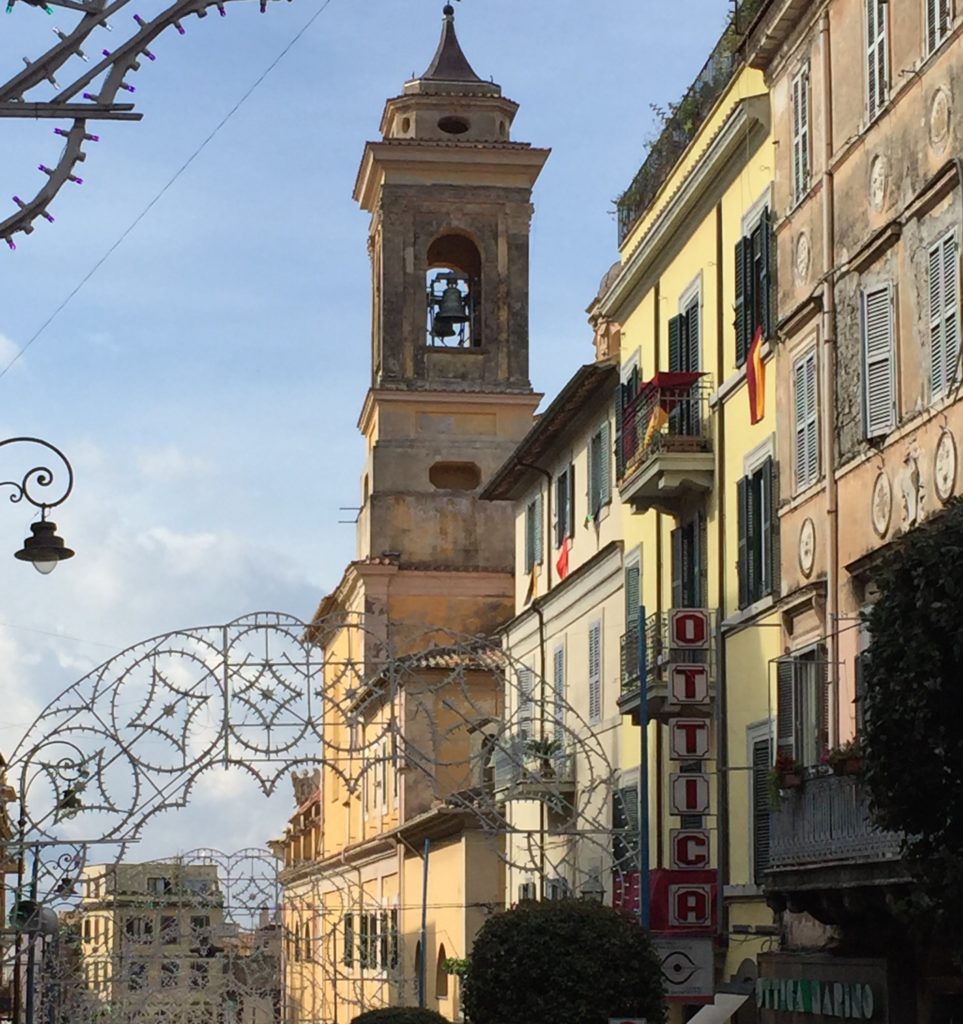
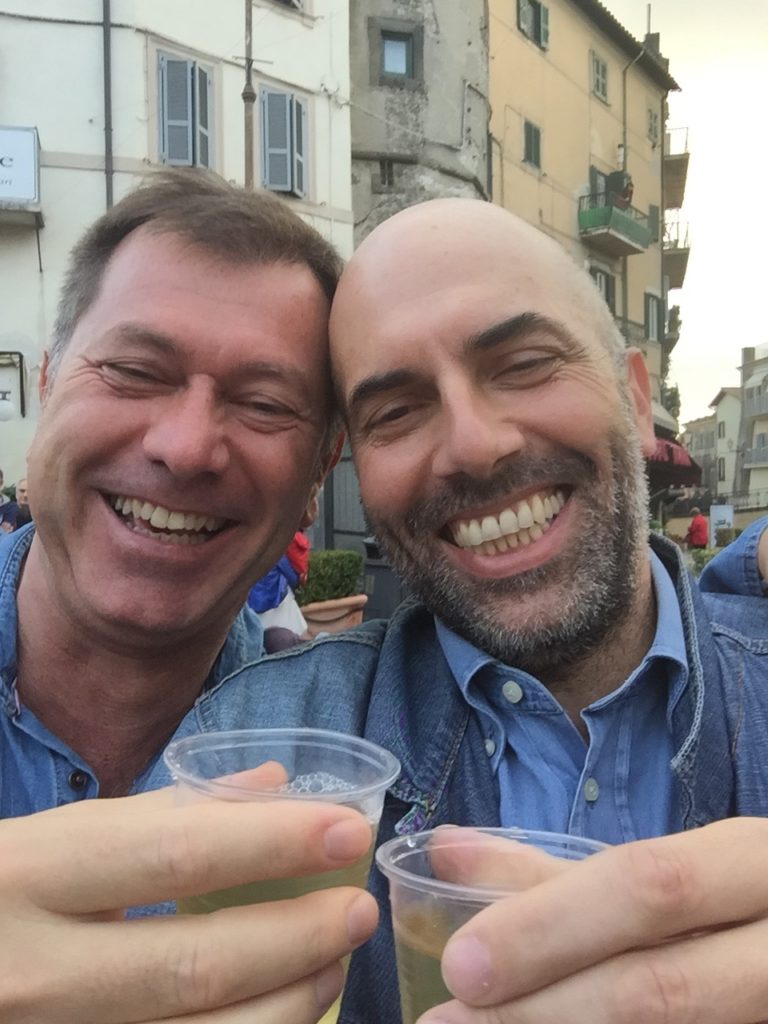
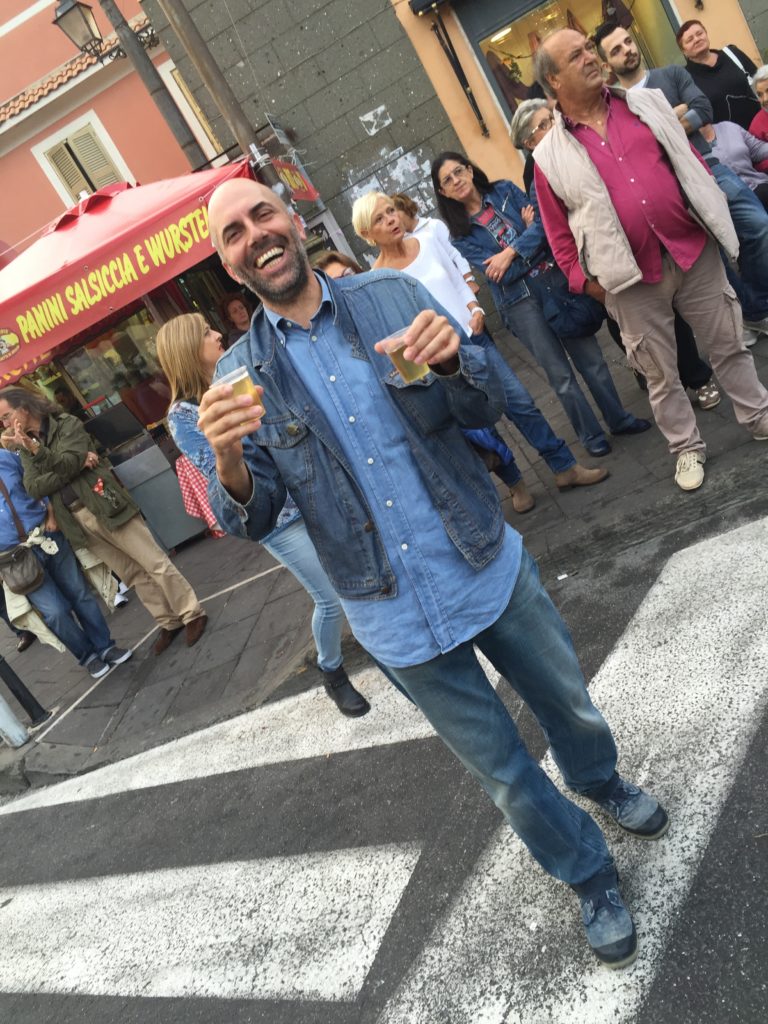
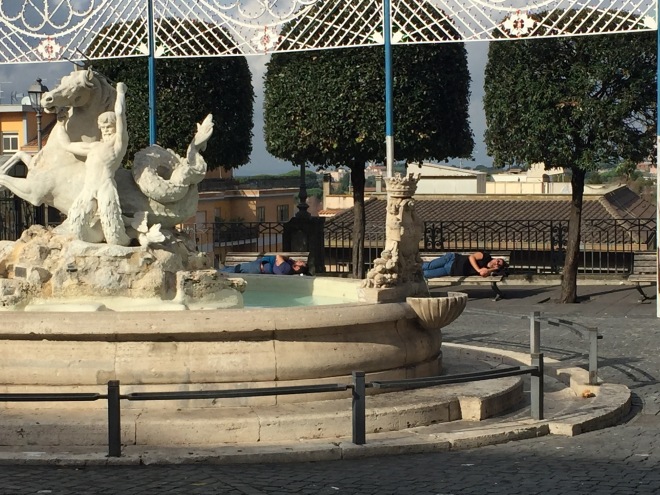
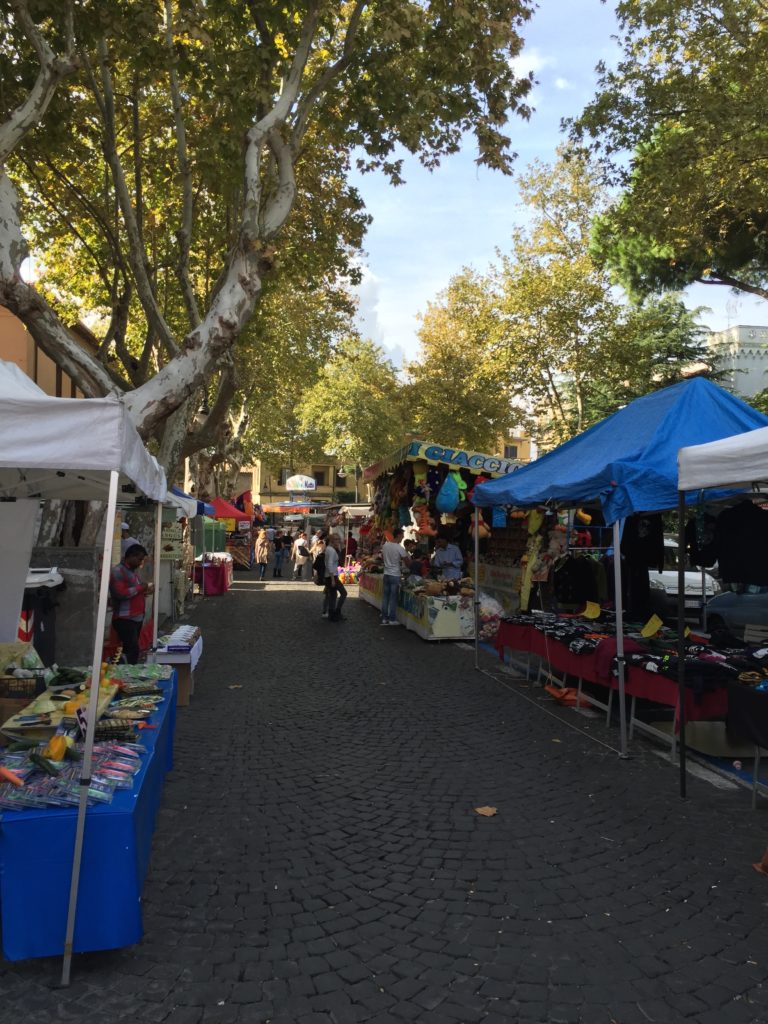
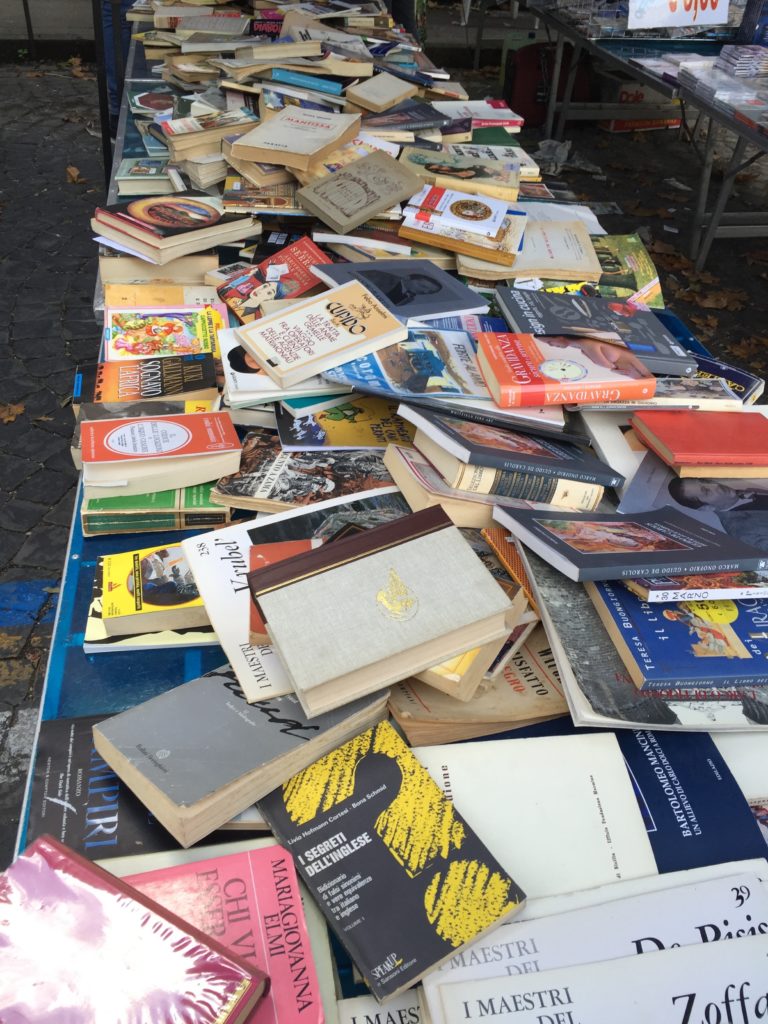
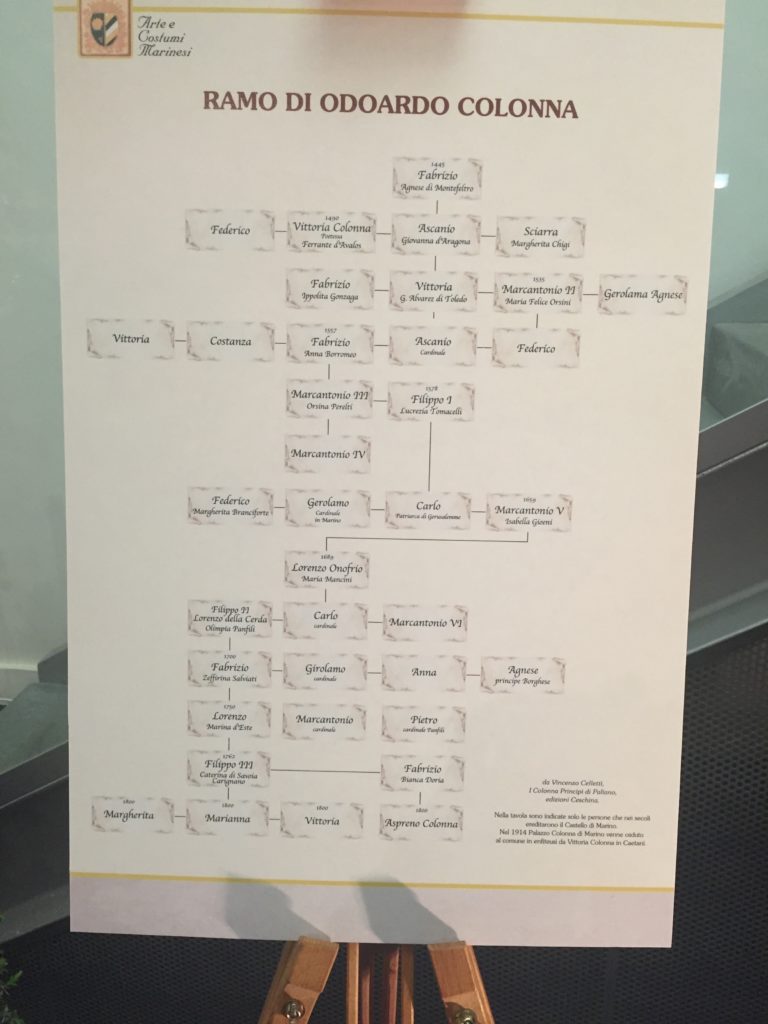
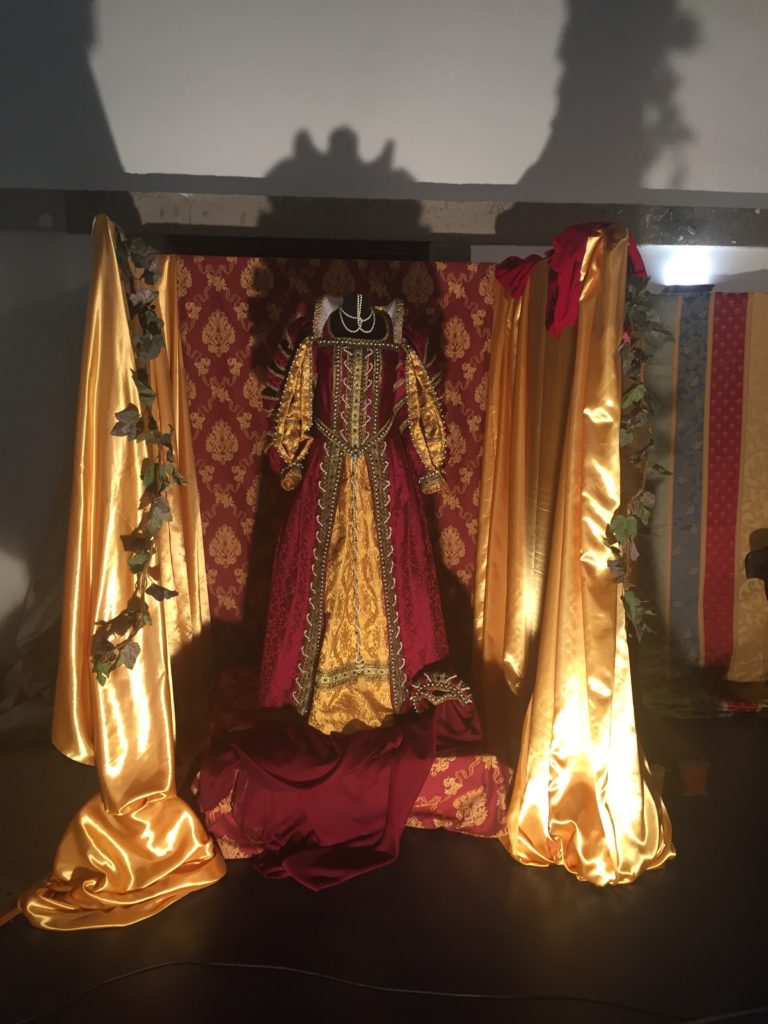
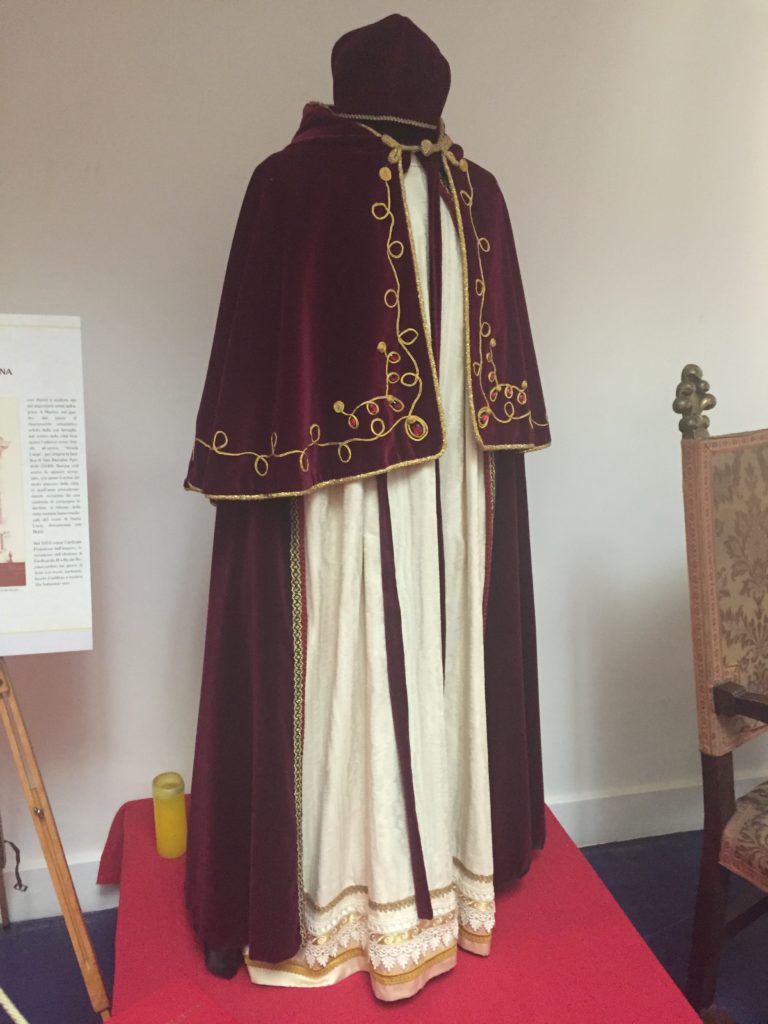
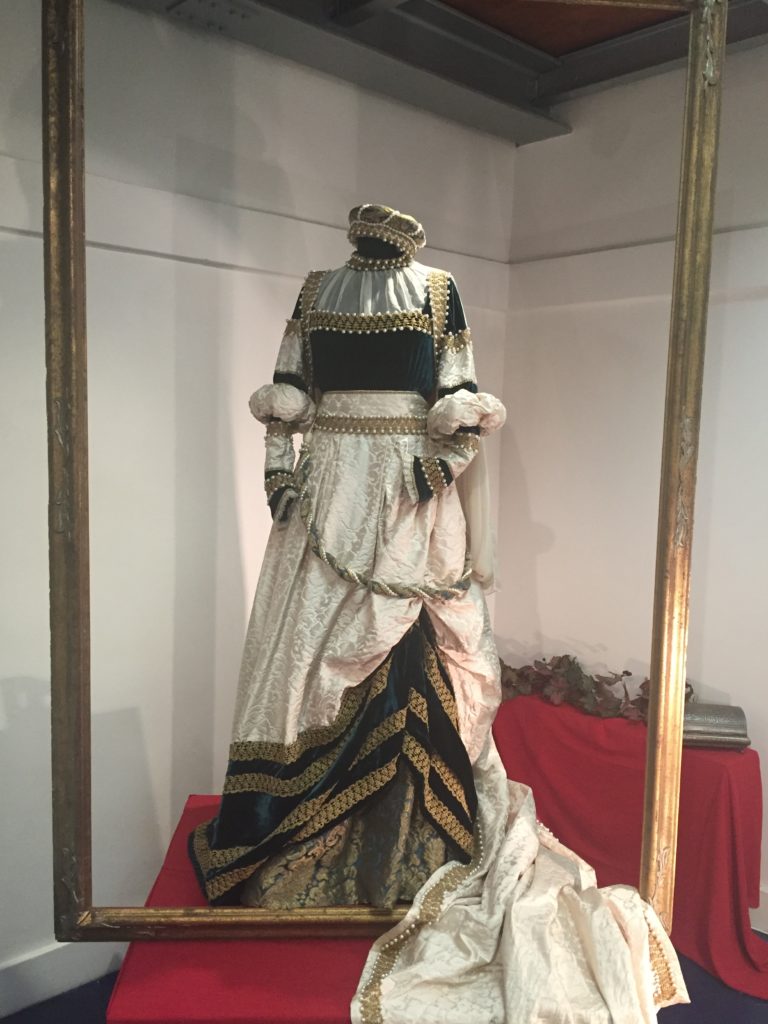
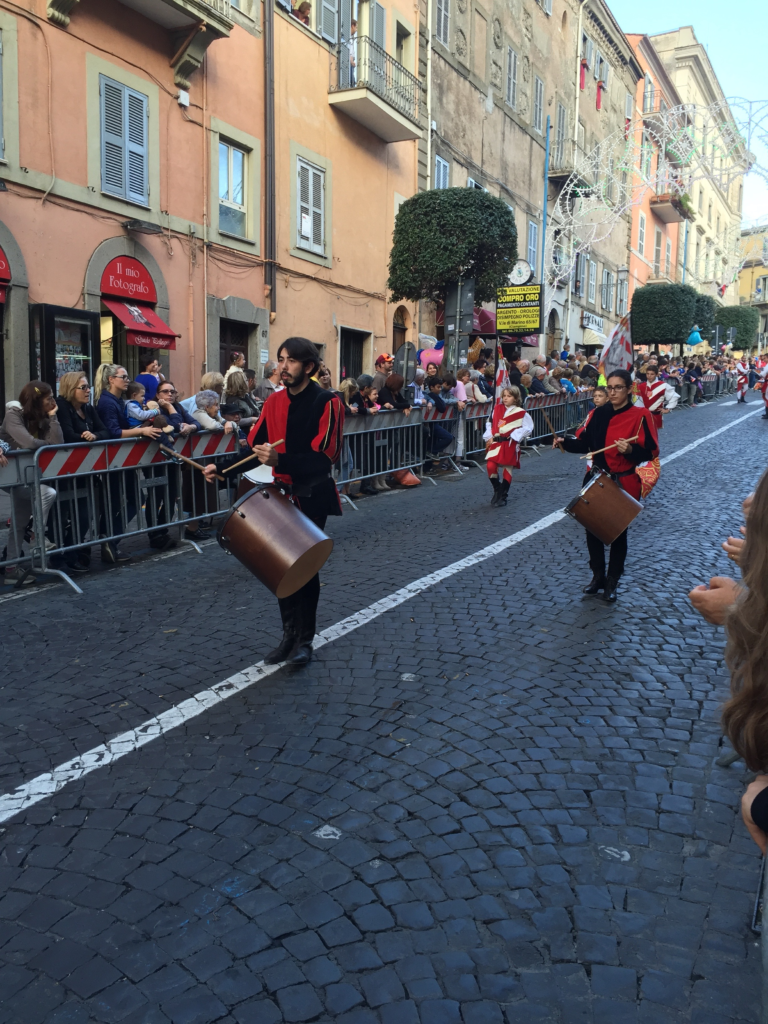
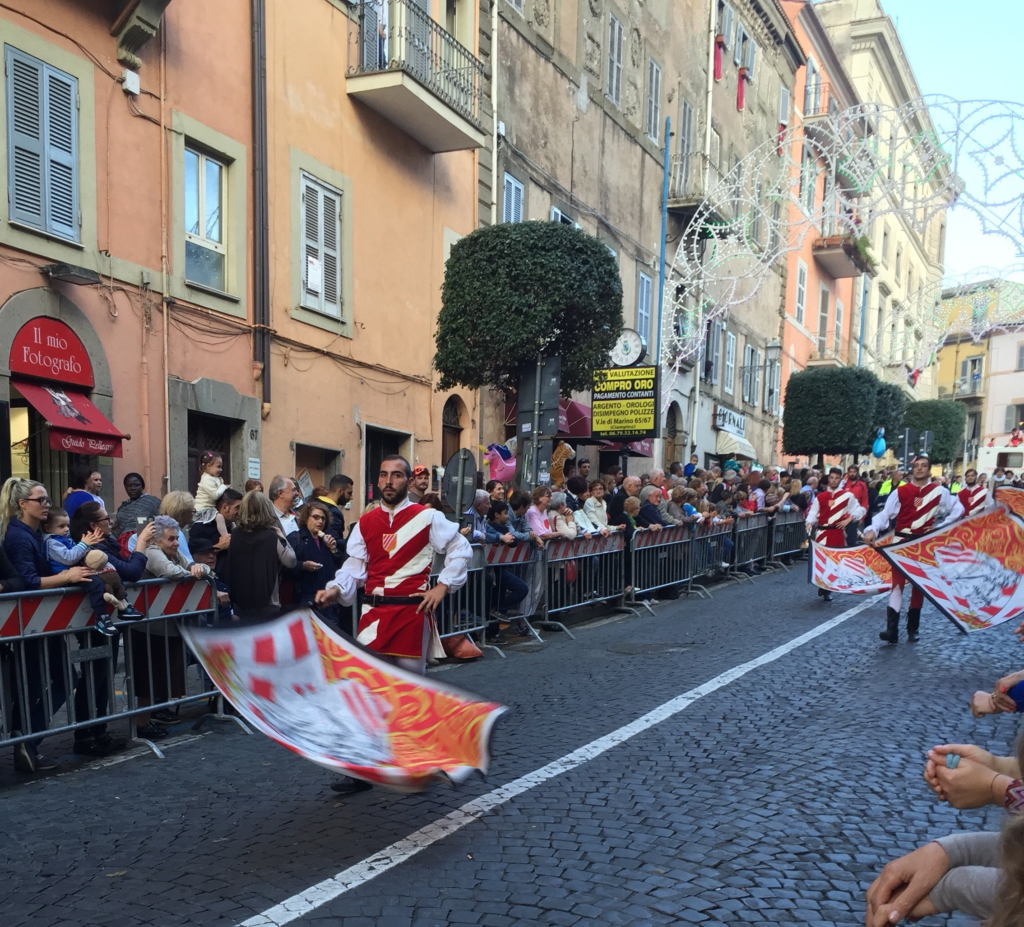
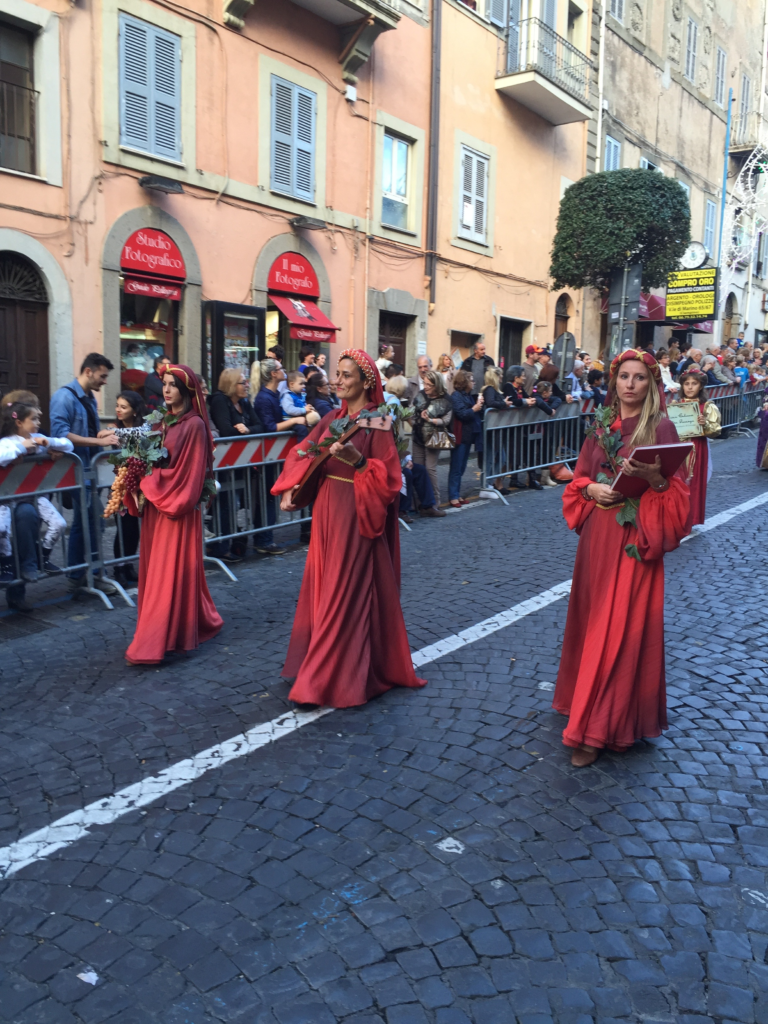
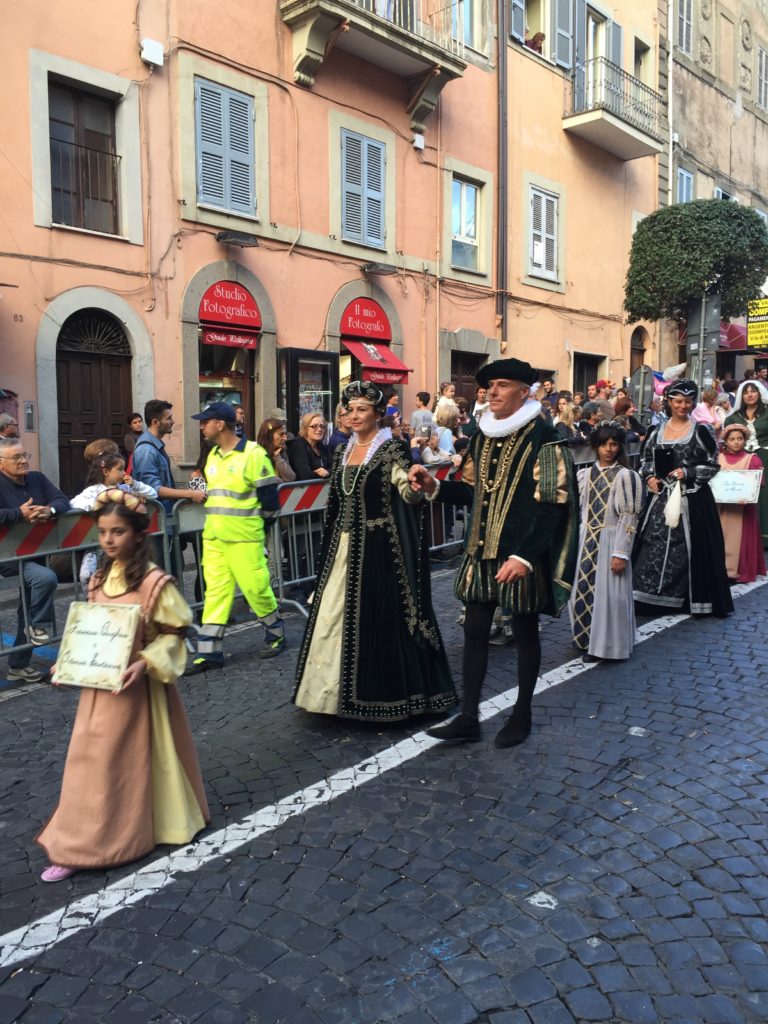
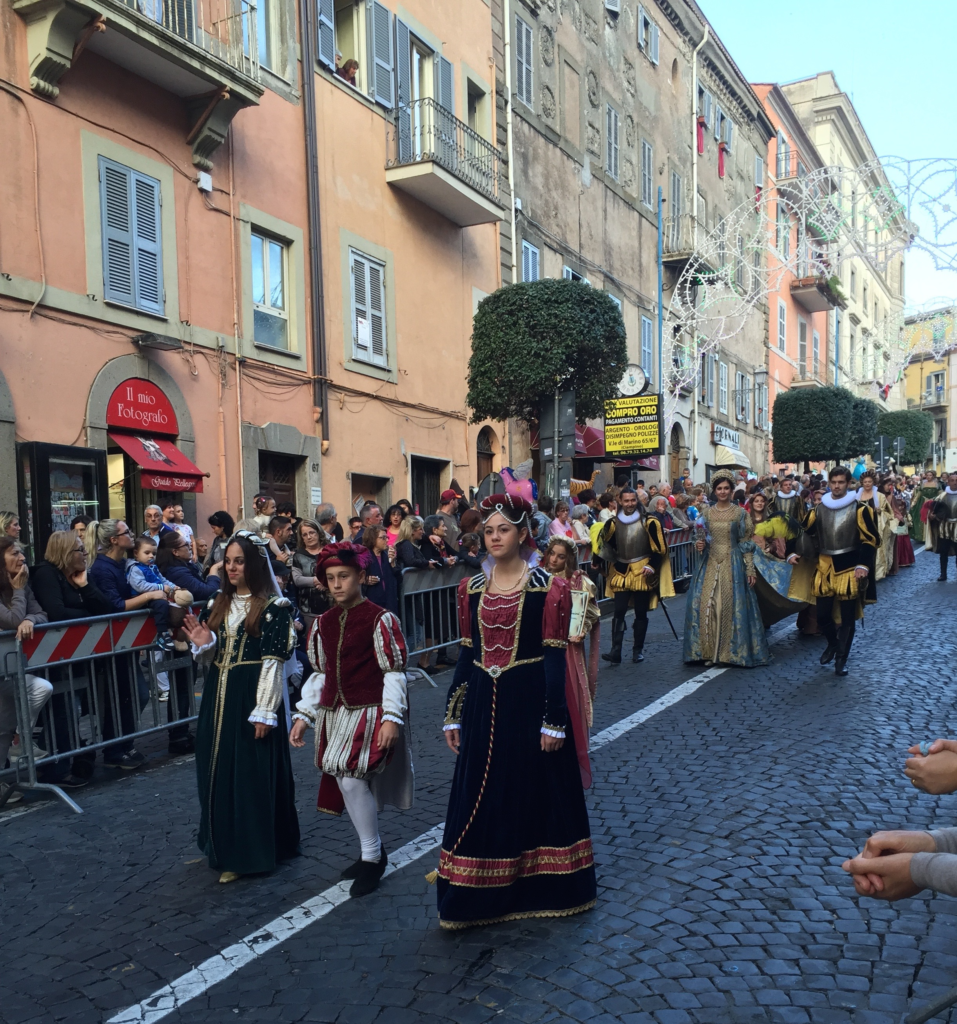
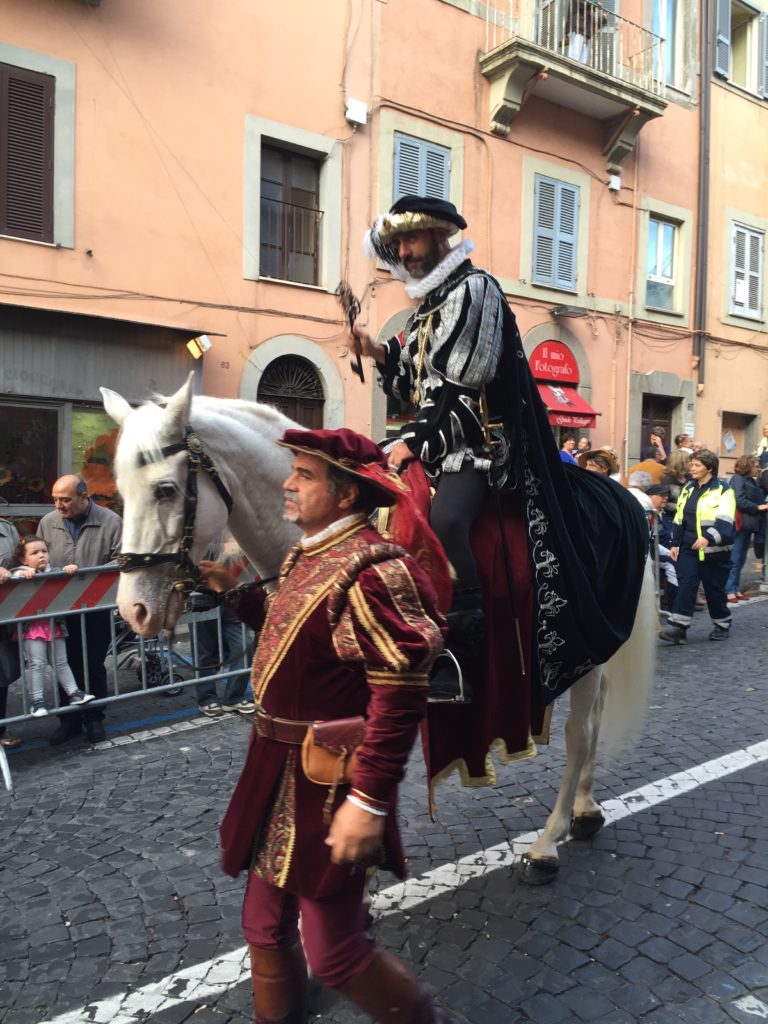
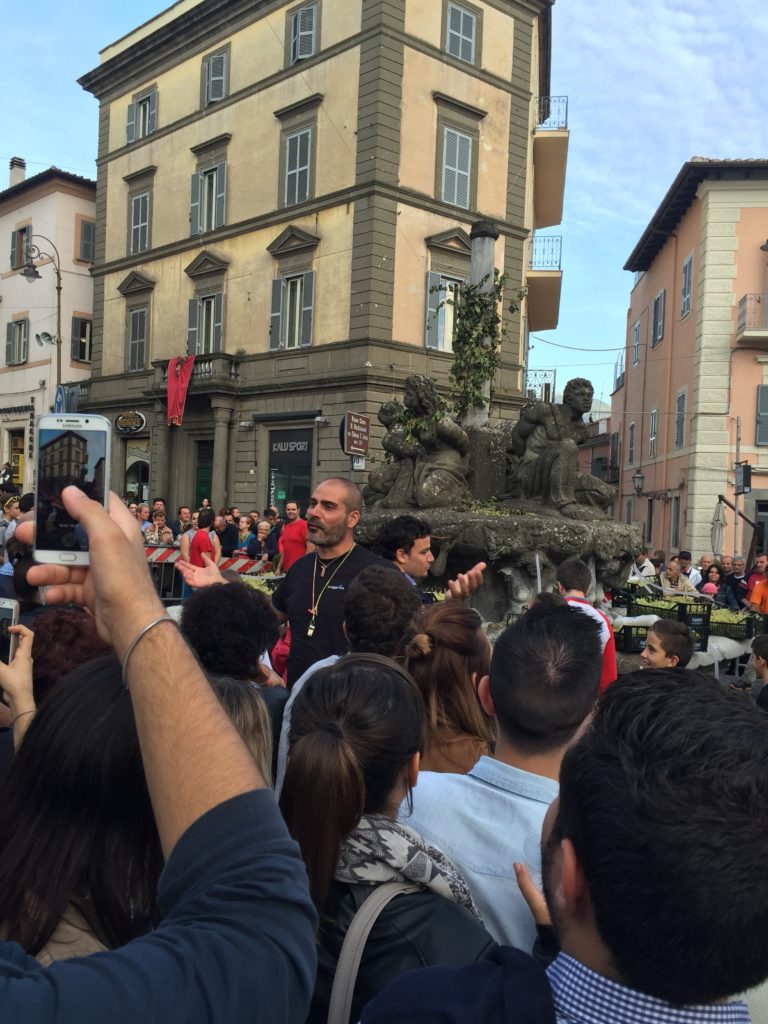
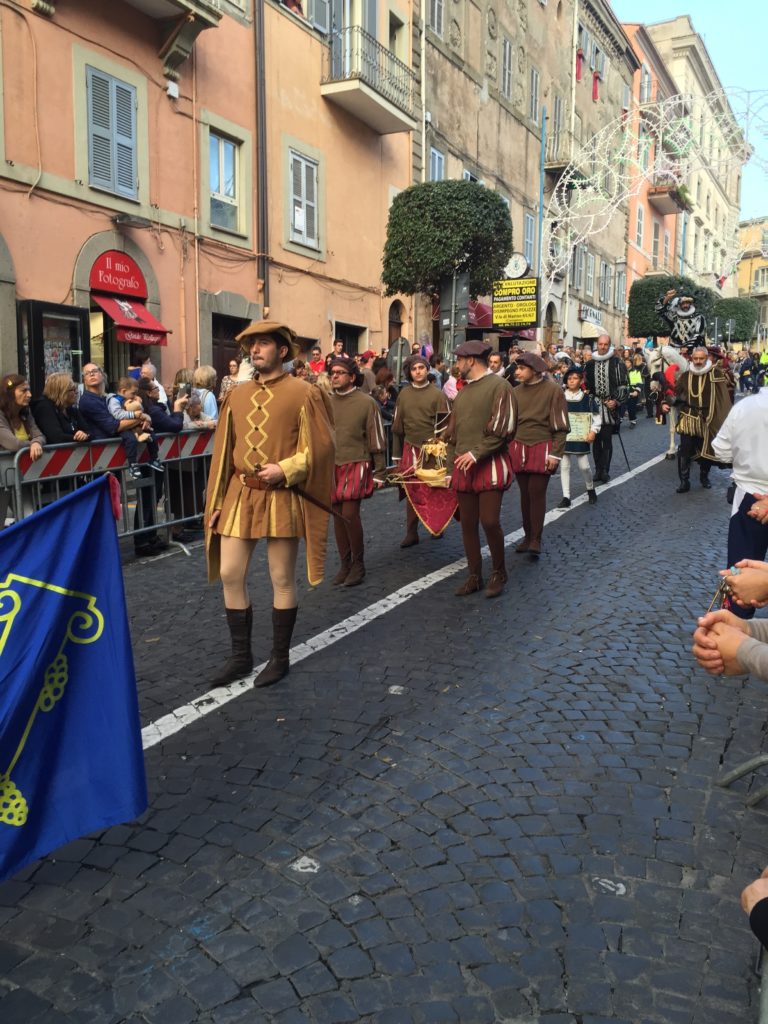
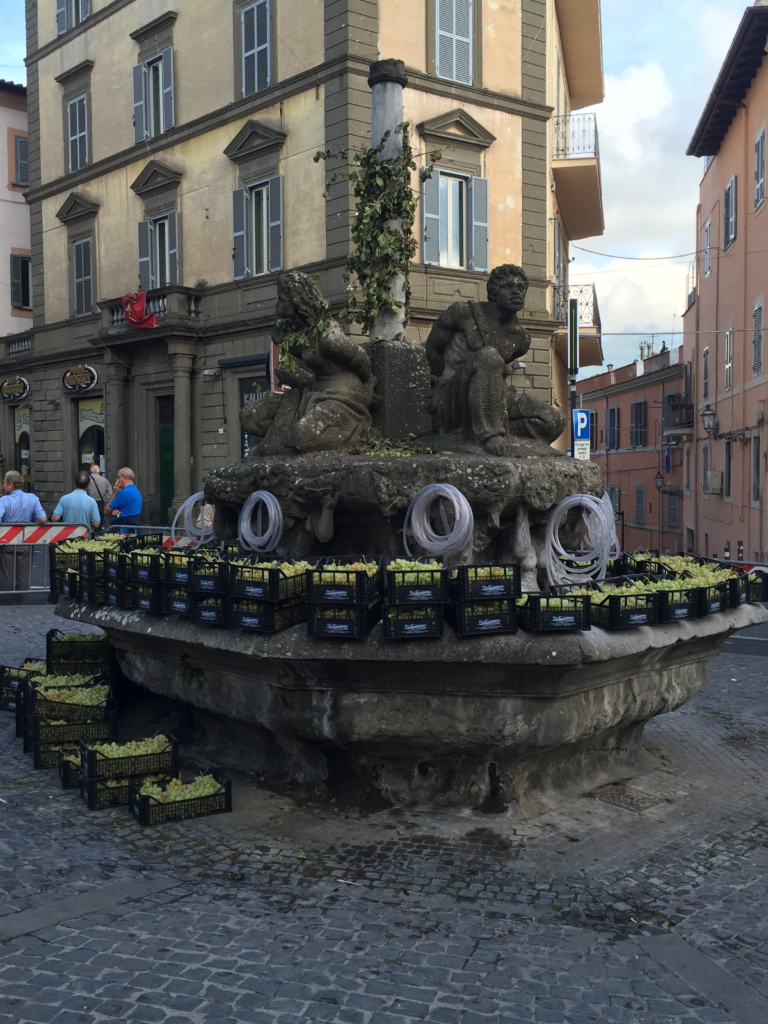
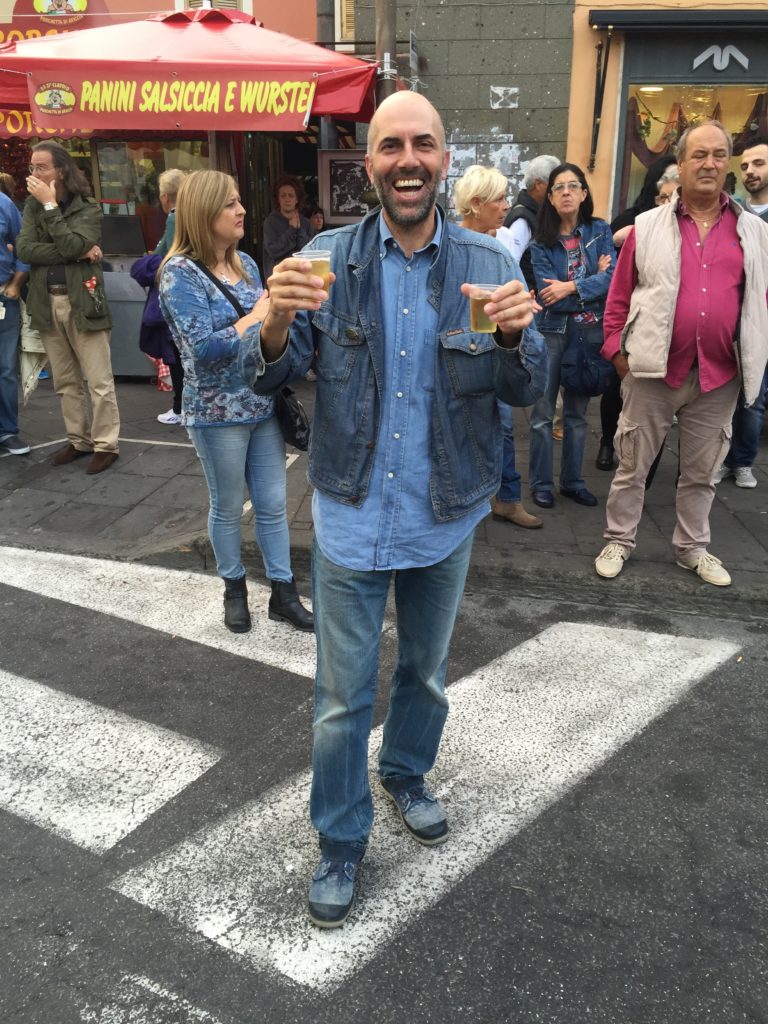

0 comments on “Finalmente Roma! Con Massimo Secondi, Viandante per un Giorno, alla Scoperta delle Ottobrate Romane/Autumn in Rome, Finally! Let’s join Massimo Secondi, our wayfarer for a day and find out together how the Romans get it done, during the Ottobrate Romane”